
Detective fiction is a subgenre of crime fiction and mystery fiction in which an investigator or a detective—either professional, amateur or retired—investigates a crime, often murder. The detective genre began around the same time as speculative fiction and other genre fiction in the mid-nineteenth century and has remained extremely popular, particularly in novels. Some of the most famous heroes of detective fiction include C. Auguste Dupin, Sherlock Holmes, and Hercule Poirot. Juvenile stories featuring The Hardy Boys, Nancy Drew, and The Boxcar Children have also remained in print for several decades.

Hardboiled fiction is a literary genre that shares some of its characters and settings with crime fiction. The genre's typical protagonist is a detective who battles the violence of organized crime that flourished during Prohibition (1920–1933) and its aftermath, while dealing with a legal system that has become as corrupt as the organized crime itself. Rendered cynical by this cycle of violence, the detectives of hardboiled fiction are often antiheroes. Notable hardboiled detectives include Philip Marlowe, Mike Hammer, Sam Spade, Lew Archer, Slam Bradley, and The Continental Op.
Julian Gustave Symons was a British crime writer and poet. He also wrote social and military history, biography and studies of literature. He was born in Clapham, London, and died in Walmer, Kent.
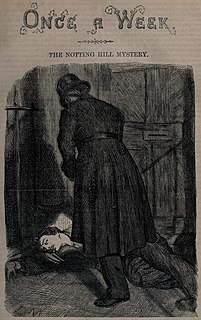
The Notting Hill Mystery (1862–1863) is an English-language detective novel written under the pseudonym Charles Felix, with illustrations by George du Maurier. The author's identity was never revealed, but several critics have suggested posthumously Charles Warren Adams (1833–1903), a lawyer known to have written other novels under pseudonyms. It is seen as one of the first detective novels in the English language, if not the first.
Cecil John Charles Street, MC, OBE, who was known to his colleagues, family and friends as John Street, began his military career as an artillery officer in the British Army. During the course of World War I, he became a propagandist for MI7, in which role he held the rank of Major. After the armistice, he alternated between Dublin and London during the Irish War of Independence as Information Officer for Dublin Castle, working closely with Lionel Curtis. He later earned his living as a prolific writer of detective novels.
The Golden Age of Detective Fiction was an era of classic murder mystery novels of similar patterns and styles, predominantly in the 1920s and 1930s.
Eleanor Taylor Bland was an African-American writer of crime fiction. She was the creator of Lincoln Prairie, Illinois police detective Marti McAllister.
Inspector Gabriel Hanaud is a fictional French detective depicted in a series of six novels and one novella by the British writer A. E. W. Mason. He has been described as the "first major fiction police detective of the Twentieth Century".
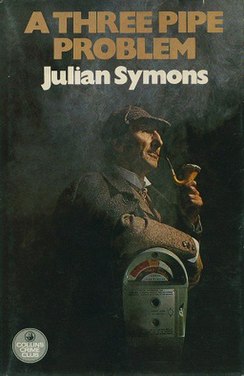
A Three-Pipe Problem is a 1975 mystery detective novel by the British writer Julian Symons. A pastiche of the original Sherlock Holmes stories by Arthur Conan Doyle, it takes place in the present day. The title refers to a line spoken in The Red-Headed League, referring to a particularly tricky problem that will take Holmes the time it takes to smoke three pipes to solve. It was followed by a sequel The Kentish Manor Murders.
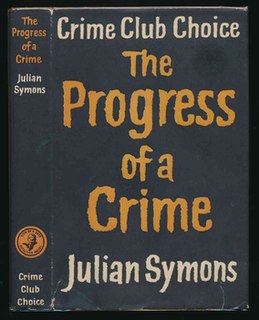
The Progress of a Crime is a 1960 mystery crime novel by the British writer Julian Symons. It was awarded the 1961 Edgar Award.
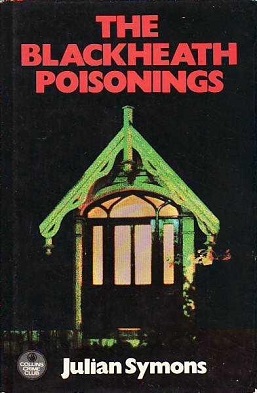
The Blackheath Poisonings is a 1978 historical mystery novel by the British writer Julian Symons. It is a murder mystery set in the late Victorian era.
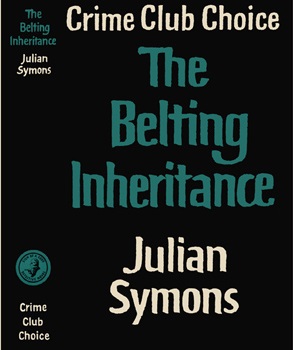
The Belting Inheritance is a 1965 mystery detective novel by the British writer Julian Symons. It is a traditional country house mystery harking back towards the Golden Age of Detective Fiction. It was republished by British Library Publishing in 2018 along with another Symons novel The Colour of Murder.

The Colour of Murder is a 1957 crime novel by the British writer Julian Symons. It was awarded the Gold Dagger of the Crime Writers' Association for that year. It was republished by British Library Publishing in 2018 along with another Symons novel The Belting Inheritance.

The End of Solomon Grundy is a 1964 crime novel by the British writer Julian Symons. The title refers to a line in the nursery rhyme Solomon Grundy.

Sweet Adelaide is a 1980 historical crime novel by the British writer Julian Symons. It is based on the real-life 1886 Pimlico Mystery concerning the possible murder Thomas Bartlett by his wife Adelaide. Symons had already enjoyed success with another Victorian-set mystery The Blackheath Poisonings.
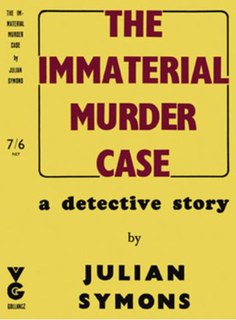
The Immaterial Murder Case is a 1945 mystery detective novel by British writer Julian Symons. His debut novel, it was the first in a trilogy featuring the Scotland Yard detective Chief Inspector Bland. The story gently makes fun of the "Great Detective" archetype popular during the Golden Age of Detective Fiction Symons wrote the book in 1939 but didn't submit it for publication for several years during the Second World War.
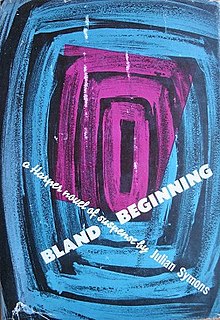
Bland Beginning is a 1949 mystery detective novel by British writer Julian Symons. It is the third and final novel in his trilogy featuring the Scotland Yard detective Chief Inspector Bland. It features Bland before he became a policeman, becoming involved in his first ever case.

The 31st of February is a 1950 mystery crime novel by British writer Julian Symons. It was his fourth published novel following a trilogy featuring Chief Inspector Bland. It further continued the author's toying with the Great Detective type of the classic model during the Golden Age of Detective Fiction. The investigating officer in a potential murder case, Inspector Cresse, is far from flattering portrayed.

The Paper Chase is a 1956 mystery crime novel by the British writer Julian Symons. It was published in America the following year by Harper & Brothers under the alternative title of Bogue's Fortune. It was reviewed by fellow writers Milward Kennedy in The Guardian and Philip John Stead in the Times Literary Supplement.

The Plot Against Roger Rider is a 1973 mystery thriller novel by the British writer Julian Symons. The novel takes place both in England and Francoist Spain. It was published in the United States by Harper.















